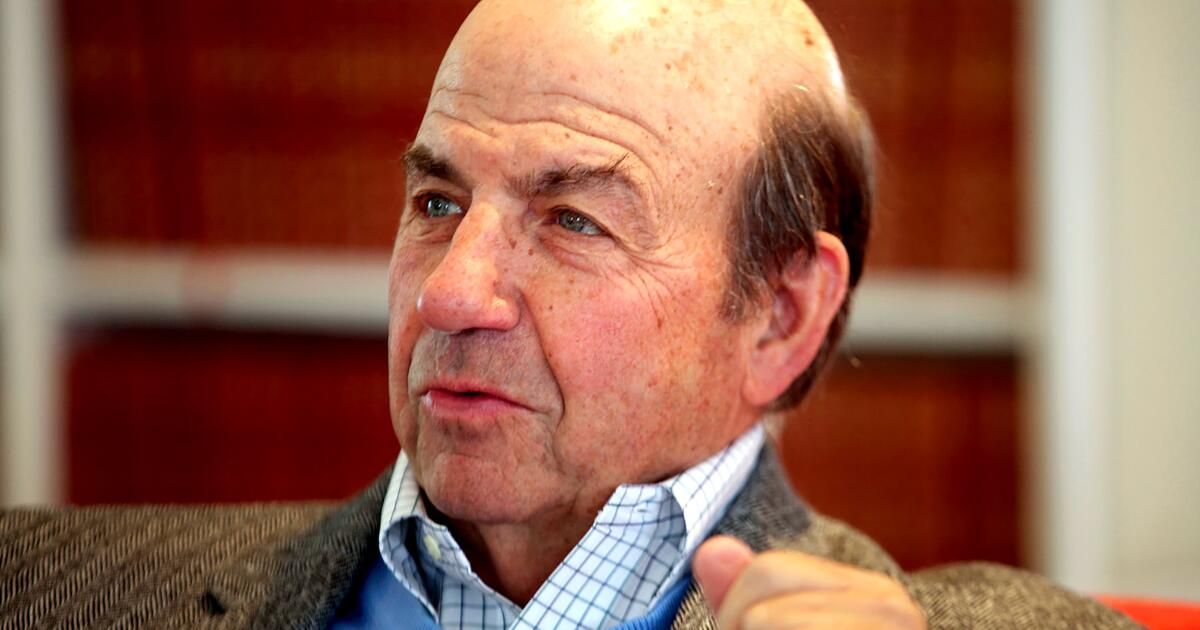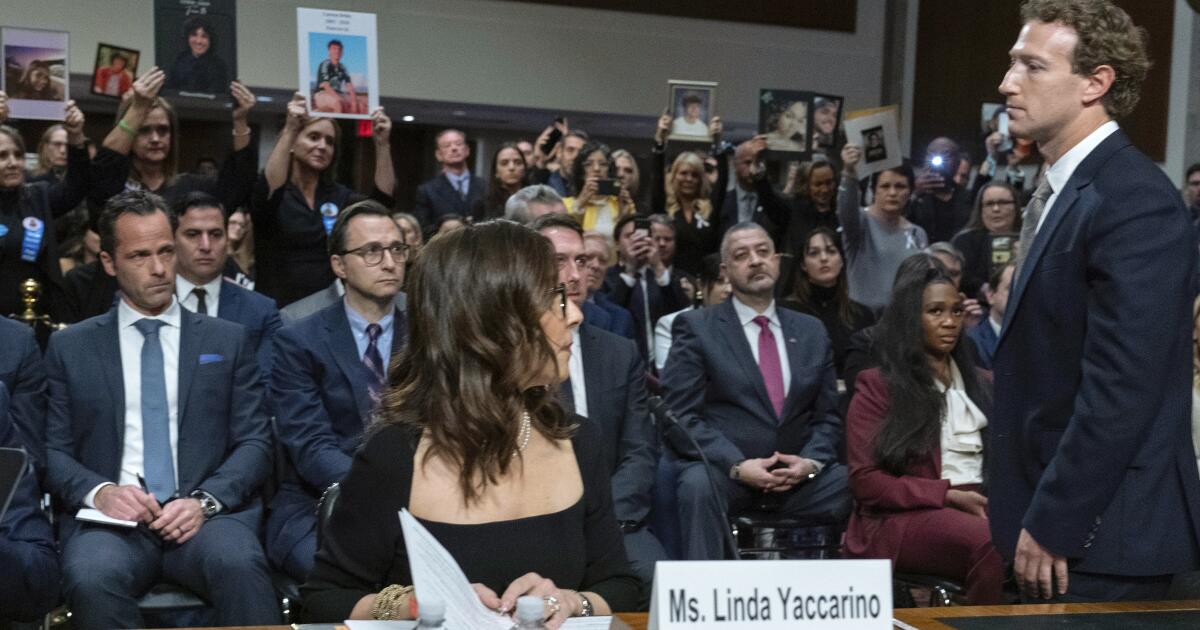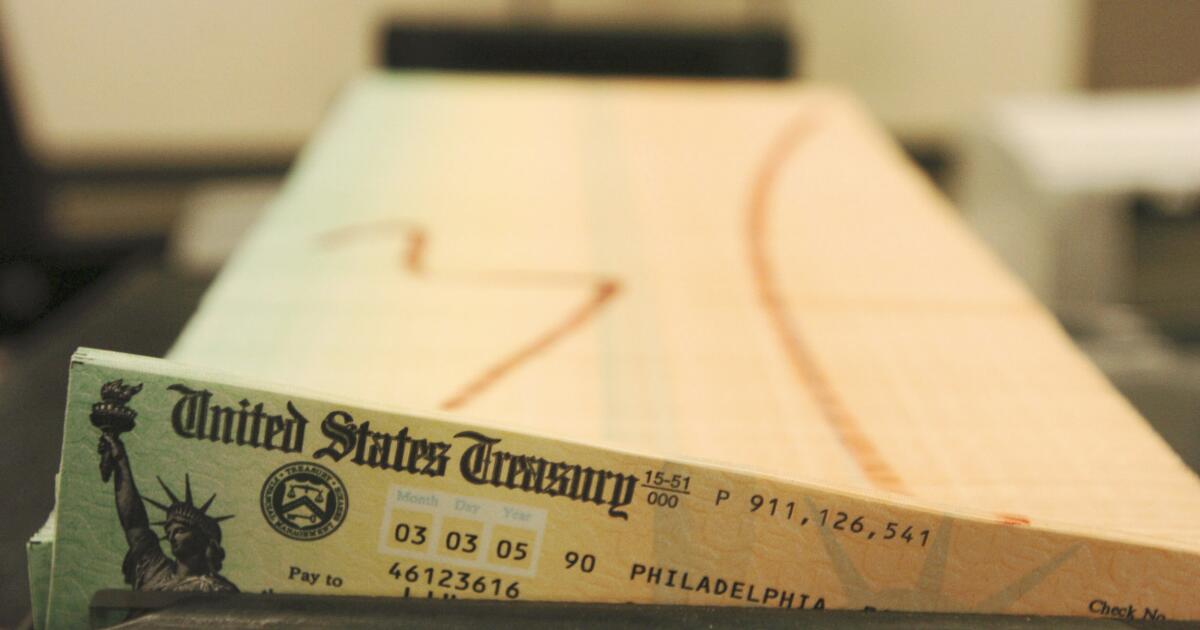Book Review
The Lede: Dispatches from a life in the press
By Calvin Trillin
Random House: 336 pages, $31
If you buy books linked to on our site, The Times may earn a commission from bookstore.orgwhose fees support independent bookstores.
Calvin Trillin’s most recent collection, “The Lede: Dispatches From a Life in the Press,” is a reminder that there is no one better working in journalism today (or, as Trillin likes to call it, “the craft.” ) that he.
For the past 60 years, Trillin has written about the civil rights movement, race relations, politics, journalism, murder, and food. For 15 years, she wrote a long narrative every three weeks for the New Yorker; she has also written short articles, comic sketches and nonsense for Nation, Time and elsewhere.
“The Lede” collects 42 of these pieces, both humorous and serious. As with Trillin's previous collections (“Killings,” “Jackson, 1964,” and others), the book focuses on one theme; in this case, the news business. He profiles journalists, examines the evolution of newsrooms and mocks experts. He reviews the year he spent covering the South for Time magazine and examines the question of journalistic objectivity in the face of evil.
“I didn't intend that we were covering a fight in which all sides (the side that believed, for example, that all American citizens had the right to vote and the side that thought that people who acted on that belief should have their right to vote) lets vote). burned houses, he had an equally compelling case to present.”
His book reminds us not only of his brilliant practice of the craft but also of what the craft once was.
Trillin is a diligent reporter and a subtle writer, and his prose reads as if it were effortlessly written and carefully and painstakingly crafted. He often drops an odd detail at the beginning of a piece (known as a “gold coin”) and then mentions the detail over and over again, to humorous effect. His comedic timing is impeccable.
“The Lede” is organized thematically, but the individual pieces are not labeled, so only after you dive into a comedic piece like “Corrections” or “The 401st” and start chuckling do you begin to realize that nothing in it should be taken seriously. This is not frustrating; it's a delight.
More serious pieces include tributes to deceased reporters such as Molly Ivins, Russell Baker and Morley Safer; a retrospective on Trillin's year covering the Freedom Riders; a profile of Miami Herald crime reporter Edna Buchanan; and an examination of the strange time when a mild-mannered Dallas Times Herald film critic assumed the persona of a redneck named Joe Bob to review trashy horror movies.
“The Life and Times of Joe Bob Briggs, So Far” is a brilliant piece that weaves together themes of newspaper wars, the insular world of Dallas businessmen, the question of honesty and taste in journalism, the fine line between parody and cruelty, and the A strange kind of crisis suffered by Joe Bob's inventor, a young writer named John Bloom.
Reading all of these pieces together, the reader notices some of Trillin's habits: not only his use of gold coins and the phrase “the trade,” but also his occasional use of anonymous or at least vague sources for some of your best descriptions and observations.
In “The Life and Times,” Trillin notes that Joe Bob’s column “presented some special problems. One of them was what people called the Archie Bunker factor: the problem of whether the column is making fun of Joe Bob or the people Joe Bob is making fun of.”
In “This Story Just Won't Write,” his recollections of working for Time, he mentions an editor, “a man with an unfortunate manner and reputation for chasing investigators around his desk, [who] He was known, behind his back, as the Horny Avocado.”
And in “Alternatives,” which examines the evolution of alternative weeklies, two writers attending a conference looked like “a retired punk rocker and his manager. … For the rest of the conference, they were referred to as 'the two gentlemen in disguise.'”
These anonymous observations are so accurate and witty that the reader could be forgiven for thinking that perhaps the “people” who said these things were actually Trillin himself. After all, he is the man who once referred to Al Gore as “a man-like object.”
As a whole, “Lede” paints a portrait of a disappearing journalistic world: newspapers, mostly, but also magazines. It does not contain even a hint of sentimentality; Trillin is too clear-sighted for that. But readers may be heartbroken to note how much has changed in the 60 years since he began writing, how diminished newspapers have become, how fierce the newspaper wars once were, how many major writers have died or moved on. . In short, how things were in commerce.
Hertzel is a book reviewer in Minnesota and author of the memoir “News to Me.”












